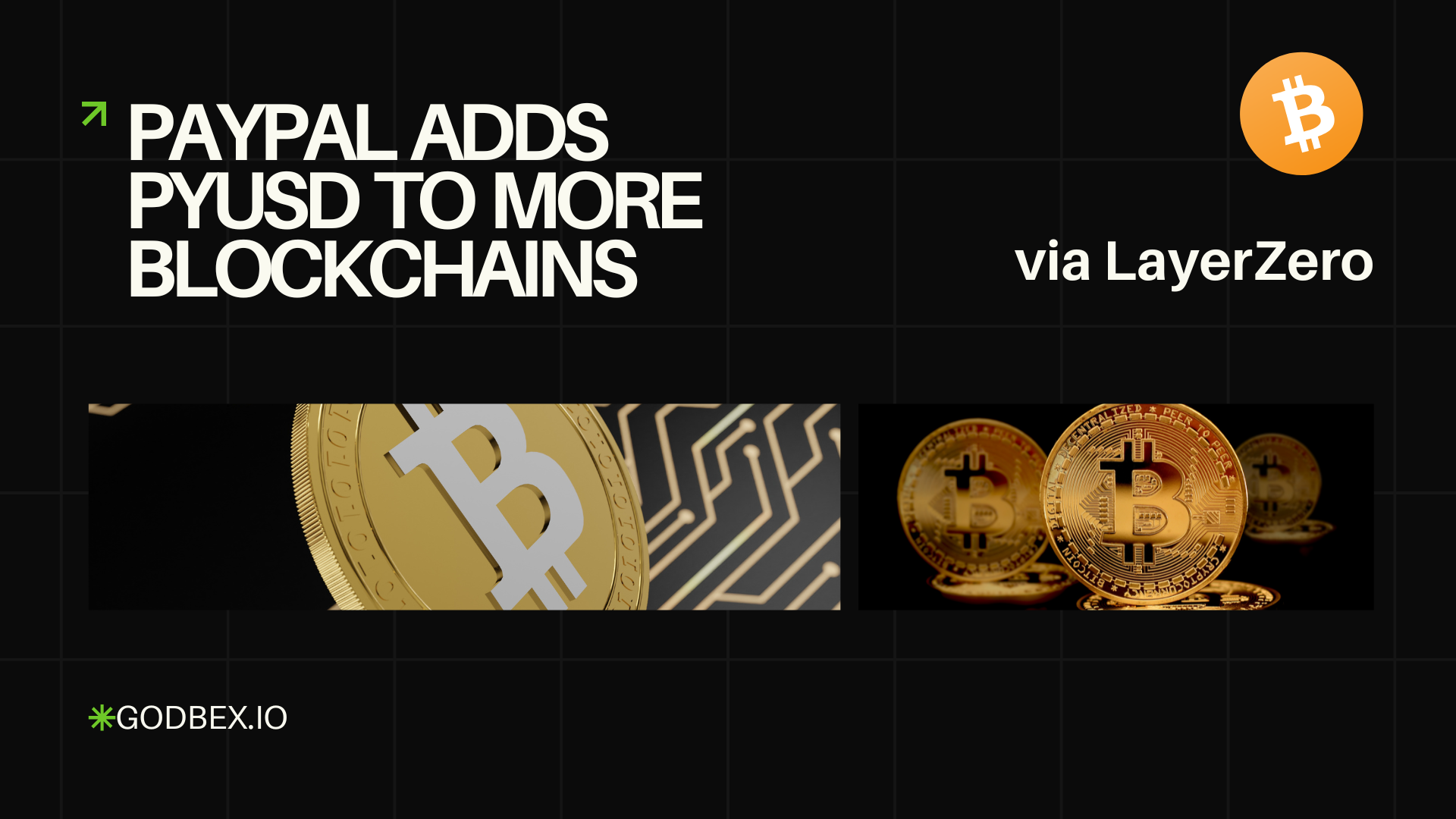
PayPal’s U.S. dollar stablecoin, PYUSD, is expanding to nine additional blockchains through an integration with LayerZero, the interoperability protocol behind the Stargate Hydra bridge. The move aims to make PYUSD easier to move across popular networks used by both DeFi users and mainstream apps.
According to reporting from CoinDesk and The Block, the expansion introduces a permissionless variant dubbed “PYUSD0,” which LayerZero describes as fully fungible with the native PYUSD issued by Paxos—meaning users should be able to move value across supported chains without juggling wrapped, off-brand versions. PYUSD0 is designed to extend distribution while preserving a 1:1 relationship with the underlying stablecoin.
LayerZero’s own announcement adds important context: any materially new product or service related to PYUSD would require approval from New York’s Department of Financial Services (NYDFS), and as of mid-September 2025 the agency had not provided such approval. The blog also reiterates core facts about PYUSD—that it’s issued by Paxos Trust Company, a NYDFS-regulated entity, and backed by U.S. dollar deposits, U.S. Treasuries, and cash equivalents.
What chains are getting PYUSD (and PYUSD0)?
Coverage indicates the LayerZero rollout adds support across a mix of EVM and non-EVM networks. CoinDesk lists Abstract, Aptos, and Avalanche among the new integrations, and notes that existing cross-chain versions on Flow and Berachain will be auto-converted to the new omnichain format. Other outlets highlight Tron and Sei as part of the expansion set. The precise roster may continue to evolve as the bridge goes live per-chain.
LayerZero says the distribution utilizes its OFT (Omnichain Fungible Token) standard and the Stargate Hydra bridge so PYUSD0 can move natively between supported networks, rather than relying on ad-hoc wrappers.
In simple words: the goal is fewer gotchas and one canonical, trackable version per chain.
Why this matters for stablecoin users
- Reach and usability. The biggest stablecoins win on ubiquity: the more chains, the more wallets, DEXes, and apps that can accept a token as “default money.” Adding networks like Avalanche and Aptos broadens PYUSD’s surface area in DeFi and consumer apps.
- Fungibility across chains. Introducing PYUSD0—which The Block reports is fully fungible with PYUSD—is meant to cut down confusion over multiple wrapped tickers. That’s a user-experience upgrade if it works as advertised.
- Liquidity and payment flows. If more exchanges, merchant processors, and wallets support PYUSD on the chains they already use, on- and off-ramp friction drops, potentially boosting volumes and real-world payment scenarios.
What stays the same
- Issuer and backing. Paxos remains the issuer of PYUSD, with reserves held in cash and U.S. Treasuries; users can still buy/sell at $1 through PayPal and Venmo where available. LayerZero is an interoperability layer, not a new issuer.
- Regulatory perimeter. LayerZero’s post is explicit that NYDFS approval is required for certain “material” product changes and that, as of Sept. 15, 2025, no such approval had been granted. Translation: the omnichain rollout is designed to stay inside the current regulatory rails while widening distribution.
How big is PYUSD right now?
CoinDesk pegs PYUSD’s circulating supply around $1.3 billion as of this week—substantial for a two-year-old token, though still smaller than category leaders. The expansion is pitched as a way to accelerate adoption by meeting users on the chains they already frequent.
Key questions and early answers
- Is PYUSD0 the same as PYUSD in my PayPal/Venmo app?
Functionally, PYUSD0 is meant to represent the same dollar-backed asset across more chains, with LayerZero handling the omnichain logic. Your PayPal/Venmo experience doesn’t change: the consumer interface still deals with PYUSD at a $1 rate. The omnichain mechanics mainly affect on-chain usage. - How will bridging work day-to-day?
LayerZero’s Stargate Hydra provides the messaging and liquidity plumbing so users and apps can move PYUSD0 between chains. Expect integrations to roll out across DEXes, wallets, and payment rails that already use LayerZero’s OFT standard. - Which chains first?
Reports consistently mention Abstract, Aptos, Avalanche and Tron, with Flow and Berachain receiving auto-conversion of prior cross-chain versions into PYUSD0. Networks may go live at different times as partners finalize deployments.
The competitive angle
Stablecoin competition increasingly hinges on where a token can be used and how easily it can be moved. With LayerZero’s OFT approach and the introduction of PYUSD0, PayPal and Paxos are pressing for parity on the “go-anywhere” front against incumbents that already ride multiple networks. The bet is that better UX, broader chain coverage, and PayPal’s brand can pull more payments and remittances on-chain.